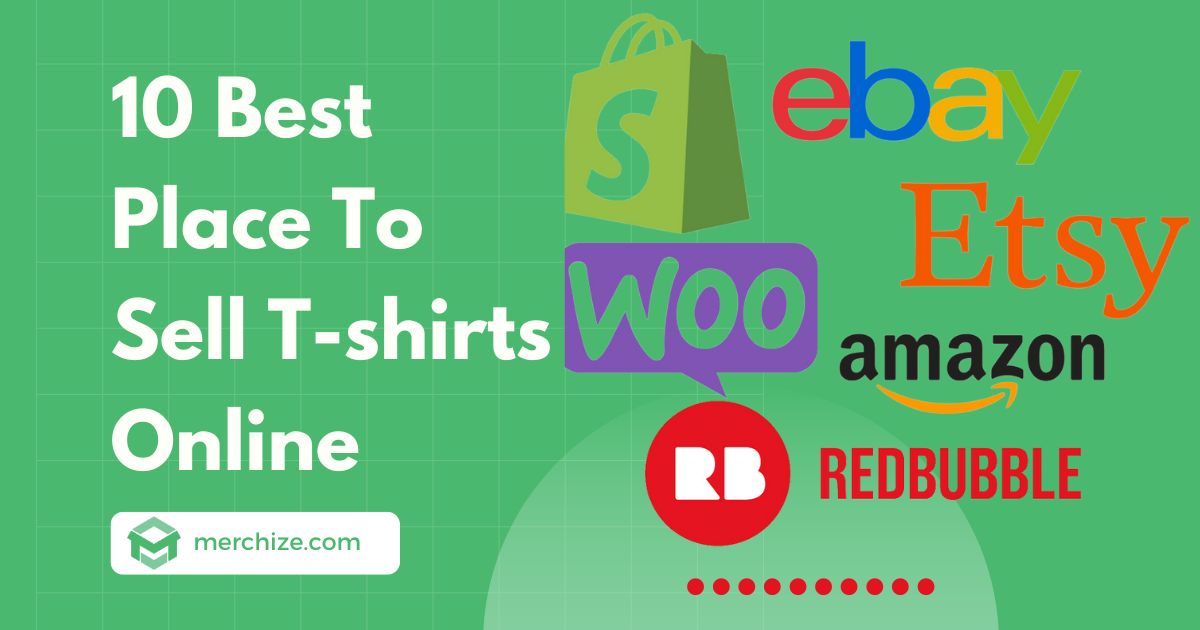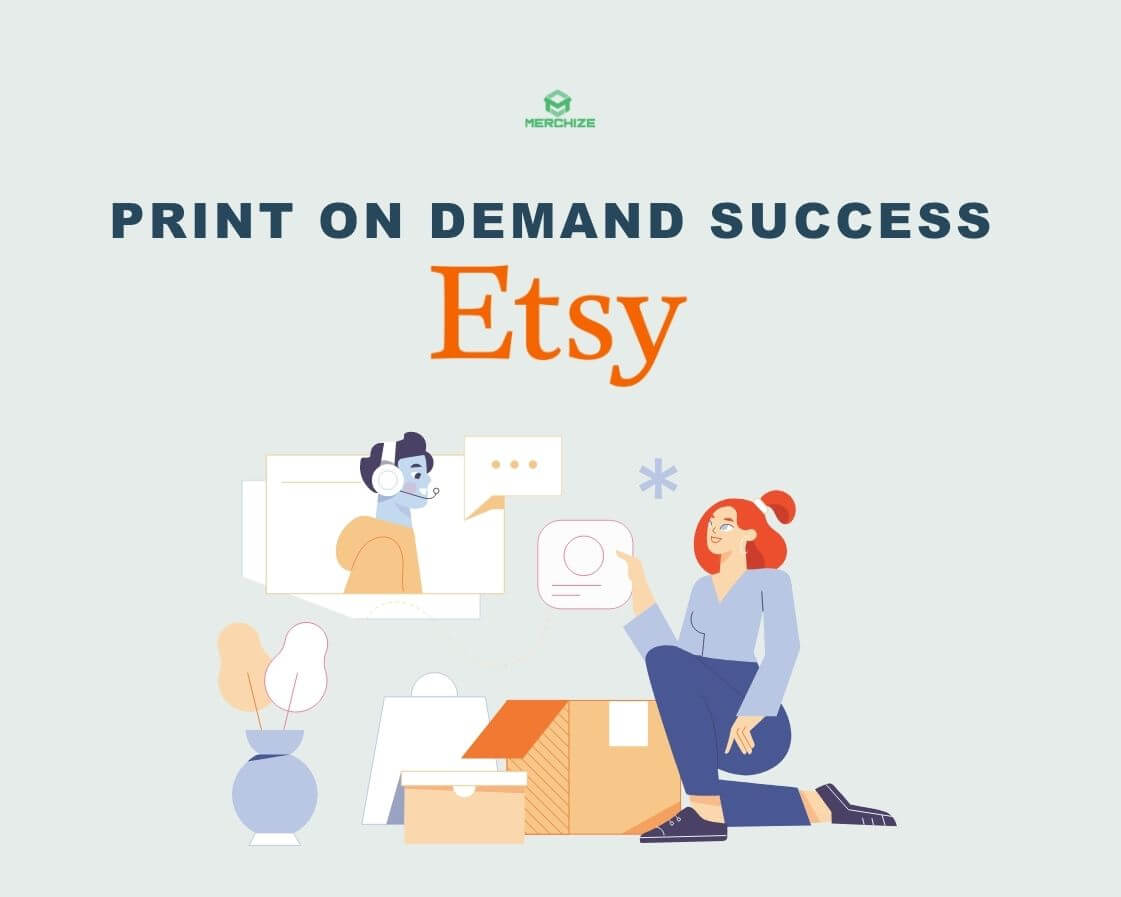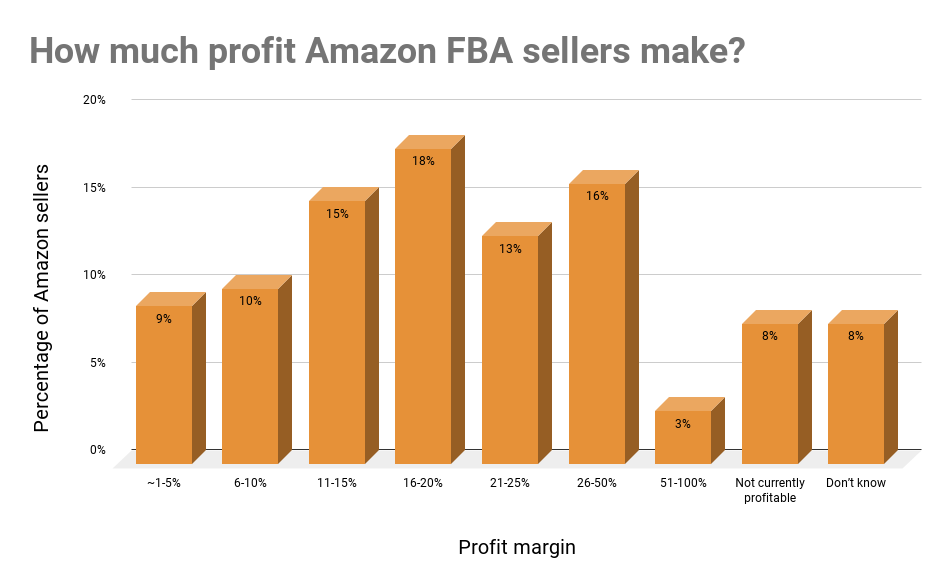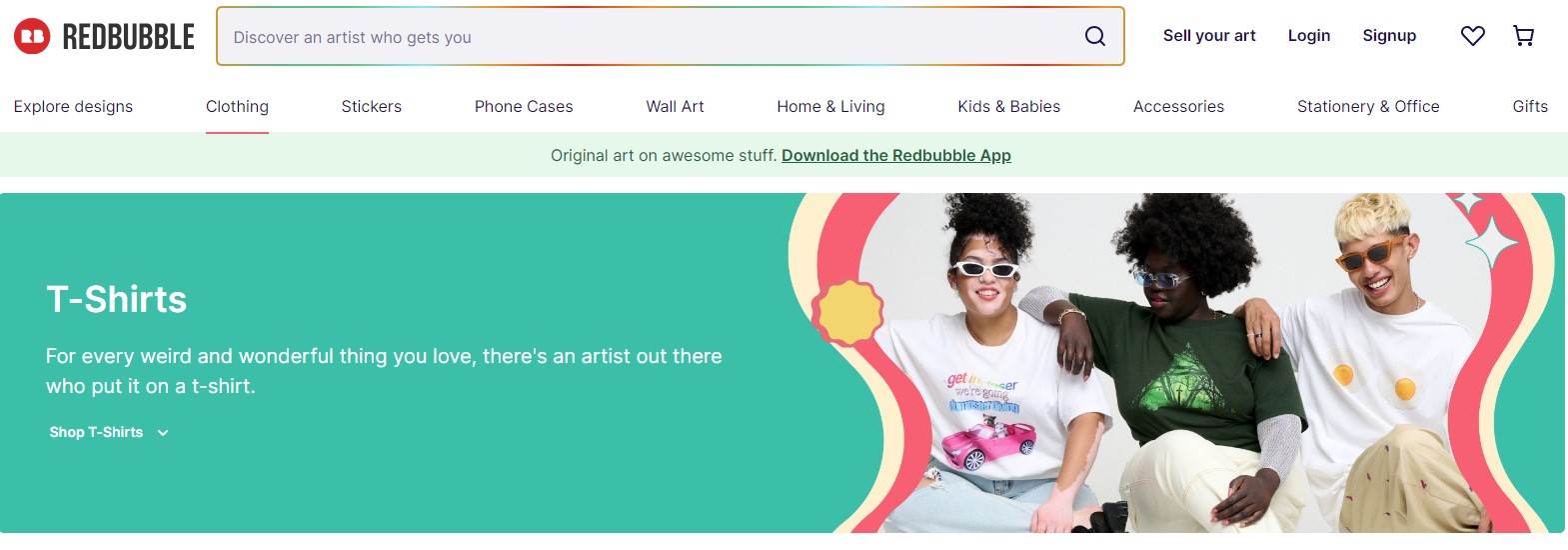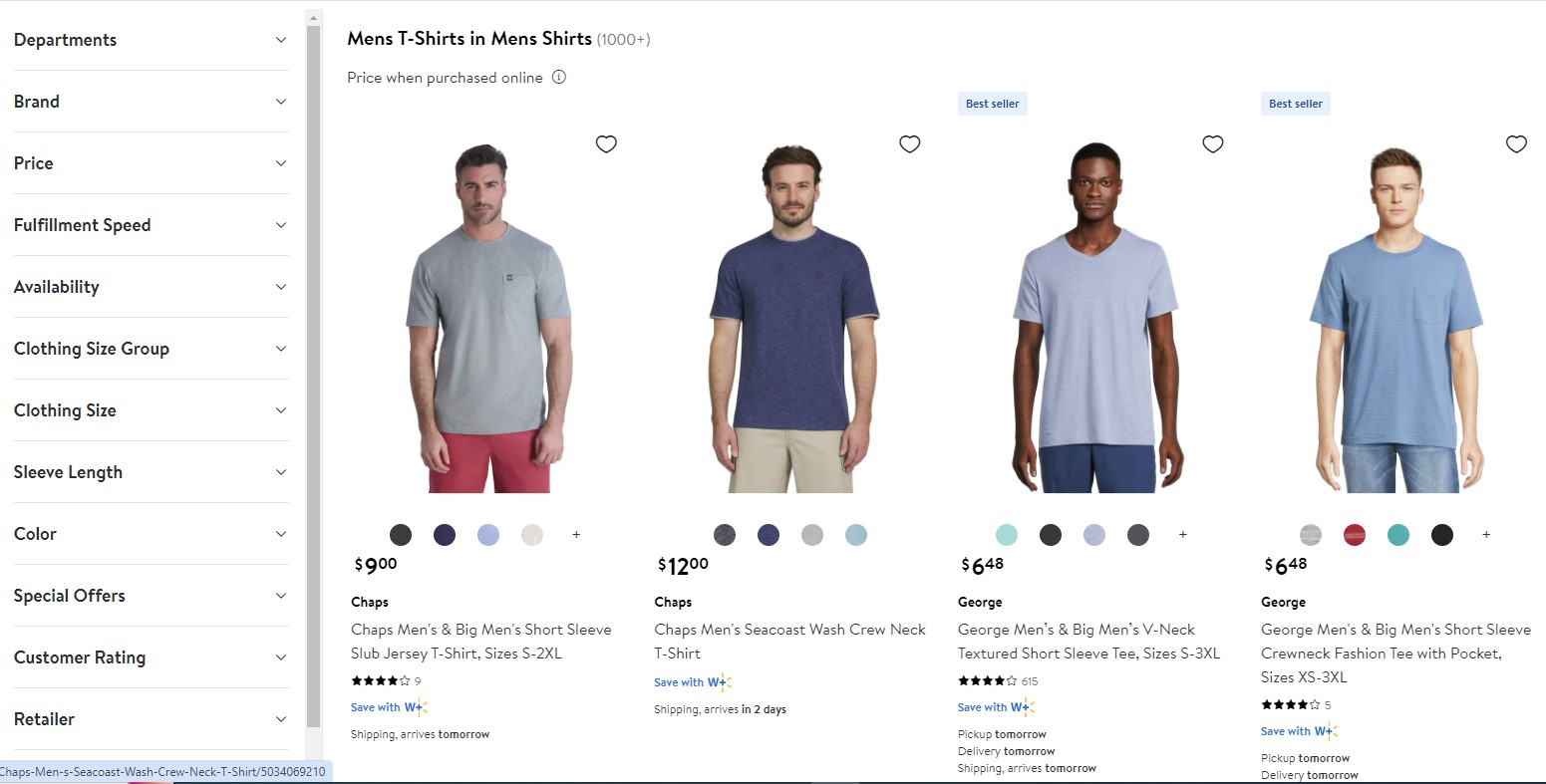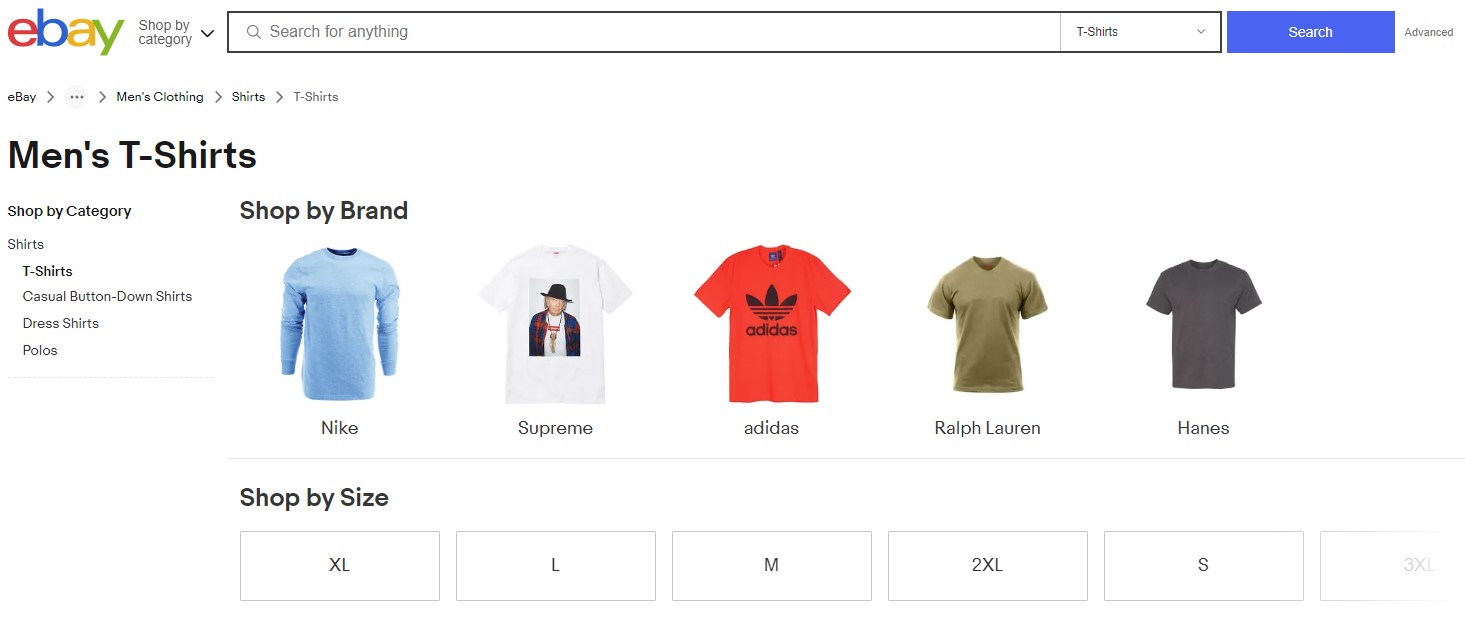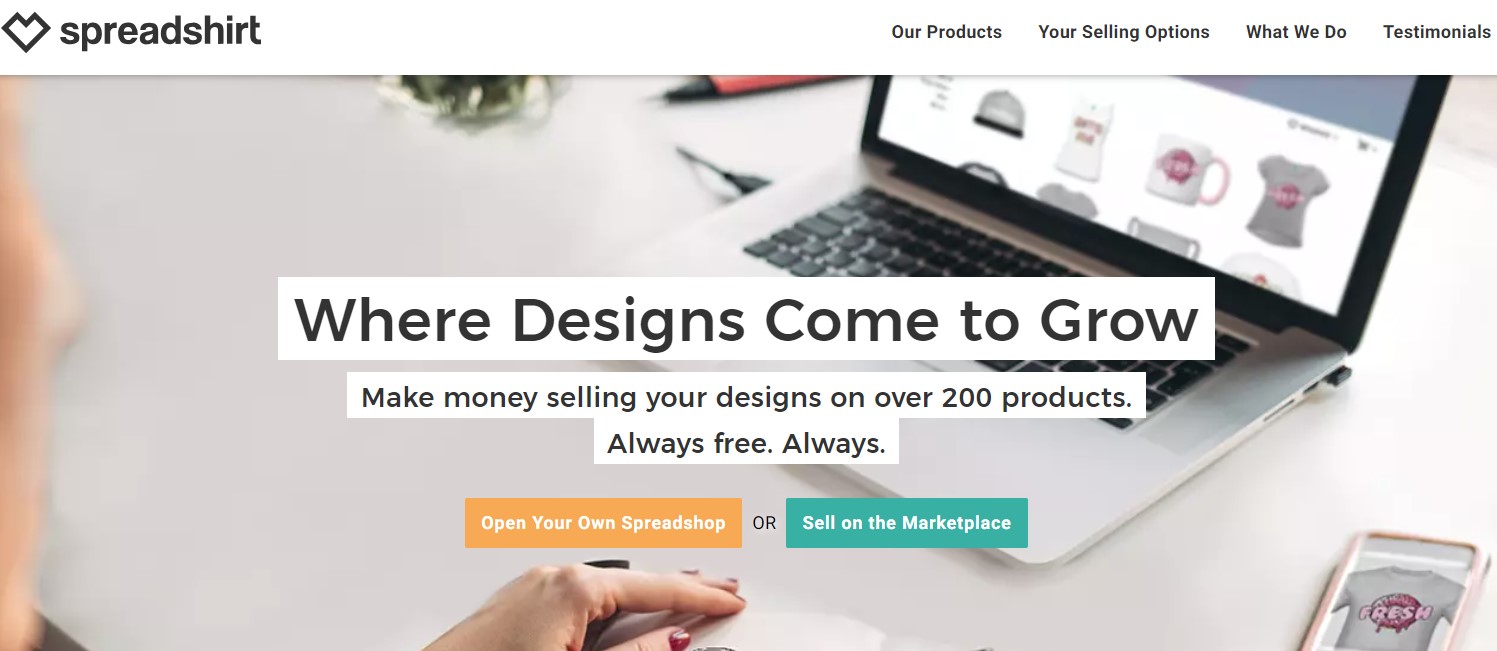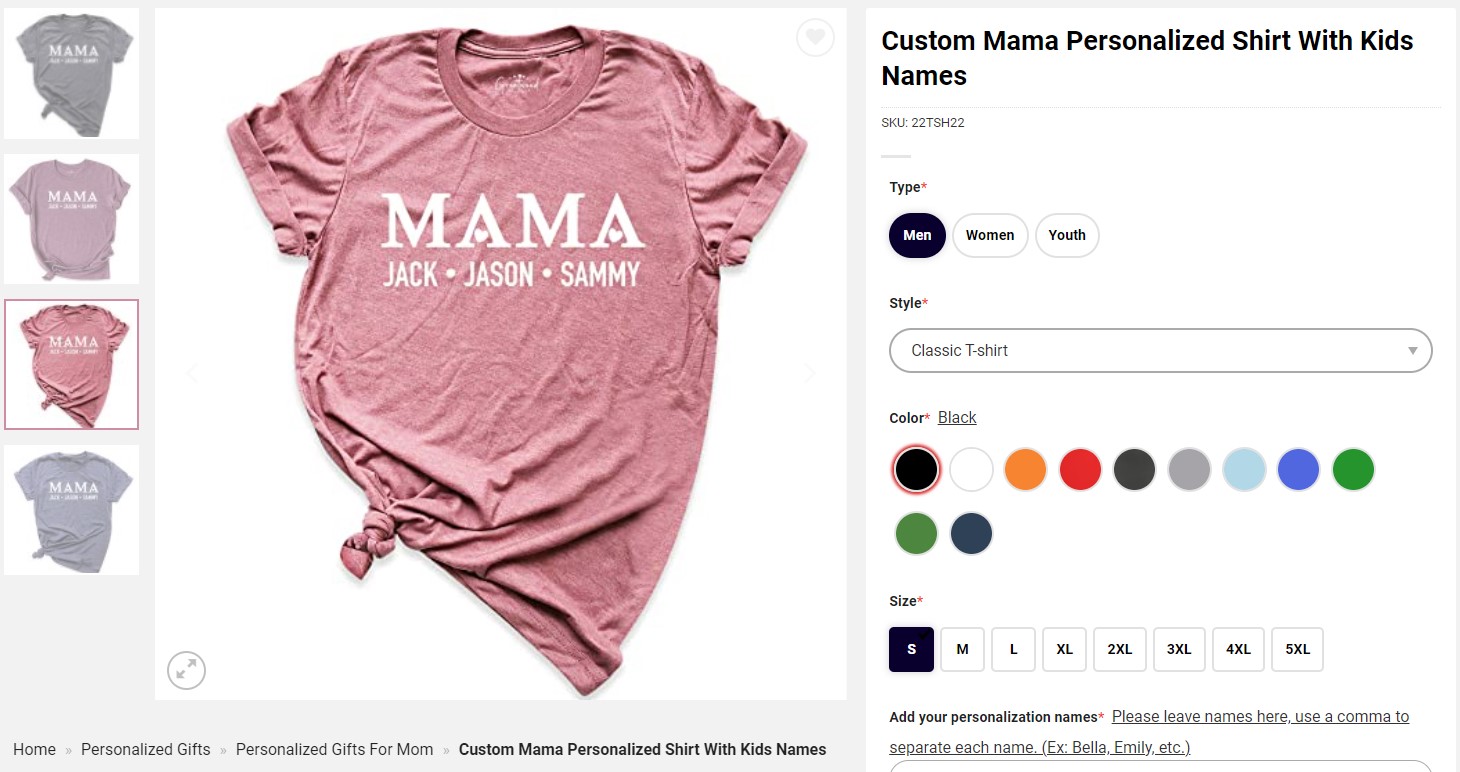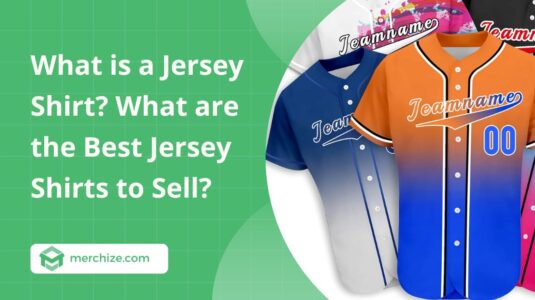Contents
If you’ve ever considered selling t-shirts online, 2025 is the perfect time to start. The print-on-demand market is booming thanks to the rise of e-commerce, social media, and ever-improving printing technology. With low startup costs, unlimited design possibilities, and a global customer base ready to buy, selling t-shirts online can be a potential side hustle or even a sustainable main job.
However, the key is choosing the right platform to sell on. Whether you tap into the power of the big guys like Amazon, Walmart, expand your creativity on marketplaces like Etsy, Redbubble, or build your own store on Shopify or WooCommerce, each channel has its own pros and cons that need to be carefully considered.
In this article, we will summarize and analyze the 10 best places to sell t-shirts online in 2025, making it easy for you to choose which one best suits your goals, budget, and POD business strategy.
Best place to sell T-shirts Online Overview
| Platform | Pros | Cons | Ideal For |
| Etsy | Established audience, easy setup | High competition, limited branding | Beginners testing apparel appeal |
| Amazon | High visibility, marketing tools | Less brand control | Sellers seeking rapid validation |
| Redbubble | Handles production/fulfillment, artist-friendly | Lower exposure | Design-focused sellers |
| Walmart Marketplace | Brand recognition, vast customer base | Strict vetting, limited customization | Established businesses seeking growth |
| eBay | Quick setup, global reach | Hidden fees, fierce competition | Disciplined sellers with strategic plans |
| Website Builders (Wix, Squarespace, Shopify) | Customizable online stores, no coding | More operational work | Entrepreneurs desiring brand control |
| TikTok Shop (limited rollout) | Access to Gen Z/millennial audience | Requires regular content creation, specific formats | Socially savvy brands with existing audience |
| Spreadshirt | Easy onboarding, hassle-free manufacturing | Limited customization restricts edgy designs | Beginners launching t-shirt businesses |
| WooCommerce | Highly customizable stores, extensive plugins | Ongoing platform expenses, limited support | Tech-savvy sellers prioritizing control |
| Merchize API (for developers) | Automated workflows, scalable growth | IT infrastructure costs, ongoing management | Technically skilled entrepreneurs |
Etsy
As an established ecommerce marketplace since 2005, Etsy provides a strong foundation for creatives looking to commercialize original apparel visions. Etsy offers a powerful combination of accessibility and visibility for creative apparel sellers. With 96 million active buyers seeking unique goods, your creations have a built-in audience. Etsy’s strong brand identity, cultivated over nearly two decades, attracts a community purposefully seeking customized products, making it the ideal platform to validate your printed tees and merch. Plus, onboarding to sell T-shirts on Etsy remains straightforward, so you can get started quickly.
Pros
- Vast existing audience open to personalized tees
- Intuitive setup perfect for first-time entrepreneurs
- Built-in marketing via Etsy Ads to targeted shoppers
However, intense competition and restrictive branding pose scaling hurdles:
Cons
- Multitude of sellers vying in the apparel niche
- Standardized Etsy UI limits brand differentiation
- Various fees that impact profit margins
Overall, Etsy allows dipping a toe into online retail thanks to pre-existing traffic. But standing out long-term and expanding creative horizons pose challenges. For t-shirt visionaries seeking more control over brand experience as they grow, Etsy may prove limiting. Still, it offers an easy entry point to validate apparel appeal before investing deeply.
Amazon
With over 1.9 million active sellers vying for consumer attention, Amazon’s marketplace commands an immense reach that new t-shirt ventures can leverage for unparalleled exposure. Tap into the platform’s existing traffic and discoverability tools to efficiently test and validate apparel ideas at scale.
While Amazon exerts more control over branding and customer data than standalone sites, the built-in promotion avenues offset the effort to drive organic growth. New merchants can especially capitalize on:
- High visibility in top search results and product pages through Amazon SEO optimization
- Direct access to targeted shoppers via Sponsored Products and Display ads
- Increased awareness from curated brand storefronts using Sponsored Brands
Combined with merchandising relationships like Merch by Amazon requiring zero upfront inventory, Amazon enables capital efficient experimentation with creative apparel visions. For those seeking to sell shirts on Amazon and get swift commercial viability feedback without heavy infrastructure demands early on, few marketplaces parallel Amazon’s positioning power.
Redbubble
Redbubble empowers artists and designers to transform creative visions into commercial viability by handling production and fulfillment. With print-on-demand technology applied across over 70 merchandise categories, creators avoid upfront inventory risks and investments.
Once uploaded, artwork gets reviewed by Redbubble’s moderation team before appearing across targeted on-site search results and Google Shopping ads. Pieces also populate individual, customizable storefronts granted to each artist. Redbubble’s global production and shipping network fulfils orders automatically based on sales signals.
Financial terms are beginner-friendly. Creators set their own margins above base product costs to reach desired retail pricing. Payouts processed around the 15th of each month require only $20 minimum account balance. Detailed analytics offer insight into top-performing pieces and traffic drivers as well.
For t-shirt entrepreneurs focused solely on design rather than operational logistics, Redbubble’s seamless support model checks many boxes. While having less exposure than mass marketplaces, the creative-first environment provides a fertile testing ground for niche concepts.
As the world’s largest company, Walmart needs no introduction. Today, its online marketplace stands as the second-biggest ecommerce player in the US, leveraging Walmart’s renown for trust and integrity to serve countless households. For ambitious businesses, these qualities also make Walmart Marketplace an enticing launchpad.
Walmart
For sellers, the built-in brand authority provides immediate advantages like:
- Enhanced Brand Recognition: Listing beside Walmart and other leading names bolsters the visibility and perceived trustworthiness of sellers’ own brands.
- Vast Customer Access: A marketplace trafficked by millions weekly offers sellers unprecedented exposure to convert and accelerate business growth.
- Cost-Efficiency Optimization: With competitive commission rates and no subscription fees, Walmart enables attractive profit potential relative to operational costs.
However, to uphold quality assurances that customers expect, Walmart also institutes stringent standards around:
- Strict Vetting Process: Prospective sellers undergo detailed application reviews, needing to demonstrate product appeal, pricing frameworks, and business credentials before approval.
- Rigid Pricing Policies: To reinforce Walmart’s discounted pricing commitments to shoppers, external sellers must adhere to strict promotional guidelines that impact margins.
- Limited Store Customization: Seller storefronts face restrictions in how much branding personality they can convey beyond Walmart’s uniform templates.
Yet by leveraging the tools and reach Walmart provides at scale, external sellers can overcome hurdles to build the next household name brand. Our latest guidance helps steer that journey.
eBay
As one of the earliest ecommerce pioneers since 1995, eBay has evolved into an online auction and shopping titan. Today, it serves over 159 million active buyers globally through a streamlined platform. For ambitious merchandisers, these qualities make eBay both an accessible market to enter and a substantial results driver.
For sellers specifically, eBay offers built-in advantages like:
- Quick Account Activation: Registering as an eBay merchant takes minutes, with identity verification preceding immediate sales capabilities.
- Far-Reaching Customer Access: With dominance across North America along with Europe, and Australia, eBay grants access to transactions spanning borders.
However, to uphold the integrity of transactions across its ecosystem, eBay also institutes stringent policies around:
Be mindful of hidden costs when selling online. Listing fees, transaction fees, shipping charges, and additional expenses can quickly accumulate. To ensure profitability, it’s crucial to carefully consider your profit margins from the outset.
Steep Competition eBay’s merchant pool exceeds 25 million, forcing sellers to aggressively differentiate offerings amid a dense apparel sector.
That said, as one of ecommerce’s most proven marketplaces for connecting demand with supply globally, eBay can catalyze serious growth for disciplined merchants leveraging its tools strategically. Our latest Blueprint shares ways to optimize listings for conversions.

Website Builders
For t-shirt entrepreneurs debating between leveraging marketplace distribution versus owning an independent online store, ecommerce website builders bridge the gap with middle-ground options. Platforms like Wix, Squarespace, and Shopify allow creating functional, visually engaging online outlets without intensive coding or development.
We’ve exhaustively assessed the leading website builders to reveal ideal picks based on budget and business growth stages:
- Wix – UX-focused builder with design flexibility perfect for launching boutique apparel shops
Shopify – Scalability and robust backend suited for expanding established merch brands - Squarespace – Sophisticated templates elevate perceived quality for appearance-conscious labels
BigCommerce – Advanced inventory and order management tools cater to high-volume catalogs - GoDaddy – Affordable pricing balanced with essential selling features
The best platform balances your priorities across dimensions like available ecommerce feature sets, onboarding learning curves, built-in marketing tools, and built-in SEO optimization. Fortunately, with increasing competition, website builders continue rolling out improvements in areas like mobile responsiveness, deeper analytics, and AI-enabled personalization.
While more demanding operationally than pure marketplaces, website builders empower entrepreneurial vision compared to the conformity of renting spaces in digital malls. We’re breaking down exactly how leveraging a website builder can set your tee brand apart online.
TikTok Shop
As TikTok has evolved into a cultural phenomenon blending entertainment with engagement, its over 1 billion monthly active users now represent a captive audience for commerce. TikTok Shop aims to harness that visibility for creators to directly monetize their content through integrated social selling.
For merchandisers, TikTok Shop brings built-in advantages like:
- Direct access to an engaged Gen Z and young millennial fanbase
- Seamless checkout integrated with ecommerce platforms like Shopify
- Leveraging creators’ existing viral content formulas and loyal followers
However, TO succeed on the platform, sellers must:
- Commit to regular content creation and engagement to drive interest
- Understand the highest-converting formats like challenges and behind-the-scenes
- Innovate merchandise ideas tuned into youth trends beyond just apparel
Currently, TikTok Shop remains in a staged rollout, granting approved sellers access first. But for digitally native brands already fluent in social media commerce, the platform offers plenty of monetization promise.
Let’s connect to discuss if undertaking TikTok Shop approval makes sense based on your merchandise strategy, audience, and operational readiness!
Spreadshirt
In the vast small business landscape, few print-on-demand platforms parallel Spreadshirt’s 20+ years of perfecting merchandising for entrepreneurs globally. By removing barriers around minimum orders, inventory, and shipping, Spreadshirt empowers everyday creativity into a commercial opportunity.
Advantages of Spreadshirt:
- Easy onboarding: Simply create an account and upload designs to get started. Listings automatically populate the Spreadshirt Marketplace providing instant exposure.
- Hassle-free manufacturing: Spreadshirt handles production and shipping through its integration with over 50 fulfillment partners. Focus efforts solely on crafting inspired designs rather than logistical hurdles.
- Creator-friendly royalties: Earn 10-20% profits per sale after minor manufacturing fees. Payouts are processed monthly once exceeding only a $20 account balance threshold.
Disadvantages of Spreadshirt:
- Limits on customization: Spreadshirt’s designer tool restricts modifying templated graphics and fonts, dampening extensive personalization.
- Policy prohibiting controversial designs: Moderators rejecting edgy artistic visions means that less creative risks can be taken by sellers wanting to push boundaries.
Yet Spreadshirt remains a turnkey springboard to transform apparel ambitions into attainable actuality. We break down exactly how to maximize visibility within its built-in marketplace.
WooCommerce
As the leading WordPress ecommerce plugin, WooCommerce transforms existing sites into functional online stores with relatively little lift. The open-source platform brings merchants distinct advantages:
- Extensive Personalization: Access thousands of free and paid themes to tailor storefronts matching your brand persona and offerings exactly.
- Robust Expandability: Explore a multitude of integrated apps spanning payment processors, shipping carriers, marketing tools, and more, critical for sales conversion.
- Ownership Over Customer Experience: From branding and design to checkout flows and curbside delivery – define engaging buyer journeys completely on your own terms.
However, relying on community support over centralized services brings obligations:
- Ongoing Platform Expenses: While free to install, domains, hosting, transactions, and SSL certificates rack up monthly for store owners directly.
- Limited Troubleshooting Assistance: Resolve issues across any bolted-on extensions independently through disparate vendor channels lacking cohesion.
If committed to configuring the highly personalized, high-control store vision you covet, WooCommerce warrants consideration. Just prepare for added effort compared to off-the-shelf platforms. We break down exactly what it takes to thrive using WooCommerce.
Merchize API
For developers and technically-savvy entrepreneurs, Merchize’s API allows customizing and streamlining order workflows above standard out-of-the-box capabilities. The REST API opens avenues like:
- Automated Product Listing: Programmatically upload entire product catalogs to multiple sales channels, saving hours of manual posting time when launching.
- Customized Order Management: Ingest order data into internal systems and define customized logic for fraud checks, alerts, etc, tailored to your specifications.
- Scalable Growth Support: Grow sales exponentially while relying on automated background processes to smoothly manage scaling production, shipping, and customer communication.
However, to leverage the API effectively does require investments in:
- IT Infrastructure Overheads: Dedicate developer resources to build and maintain integrations with changes needing code updates over time.
- Ongoing Management Tradeoffs: Once reliant on customized workflows, ensuring continuity means allocating management bandwidth to monitor API rigor.
In summary, while the Merchize API necessitates technical skill sets, it unlocks new levels of operational efficiency and scale. We help construct the business cases behind API adoption.
Start Selling Your Custom T-Shirts Online With Merchize At A Competitive Price?
Never Out of Stock. Fast Production and Delivery Time.
Create an Account
Order a Sample
With diverse platforms from digital retail giants to independent store builders now supporting tee entrepreneurs, identifying optimal marketplaces to efficiently commercialize your vision pivots upon strategic fit above all else. This comparative analysis of 10 leading channels shows that, whether desiring accessible validation, maximum exposure, or full creative control, viable paths exist matching individual capabilities with inherent tradeoffs. By identifying the right platform that aligns with your ambitions, you can transform challenges into opportunities and unlock the potential of your apparel business. Your path to profitability is within reach – take confident steps forward and build your brand on a strong foundation.
FAQs
1. Is selling t-shirts online profitable in 2025?
Yes. With POD services, you can launch a t-shirt business with minimal upfront costs and profit margins of 30–60% depending on your pricing and niche.
2. Do I need inventory to sell t-shirts online?
No. Print-on-demand platforms handle printing, packaging, and shipping, so you don’t need to stock products.
3. What’s the best place to sell t-shirts online for beginners?
Etsy, Redbubble, and Spreadshirt are great for low-risk entry. Shopify or WooCommerce is better if you want full control of your brand.
4. How much does it cost to sell t-shirts online?
Costs vary. Marketplace fees (5–15% per sale), website hosting ($20–$40/month), plus optional marketing spend. POD models let you avoid bulk buying.
5. Can I sell t-shirts online without designs?
Yes, you can hire freelance designers on platforms like Fiverr or use AI-powered design tools to create artwork quickly.
